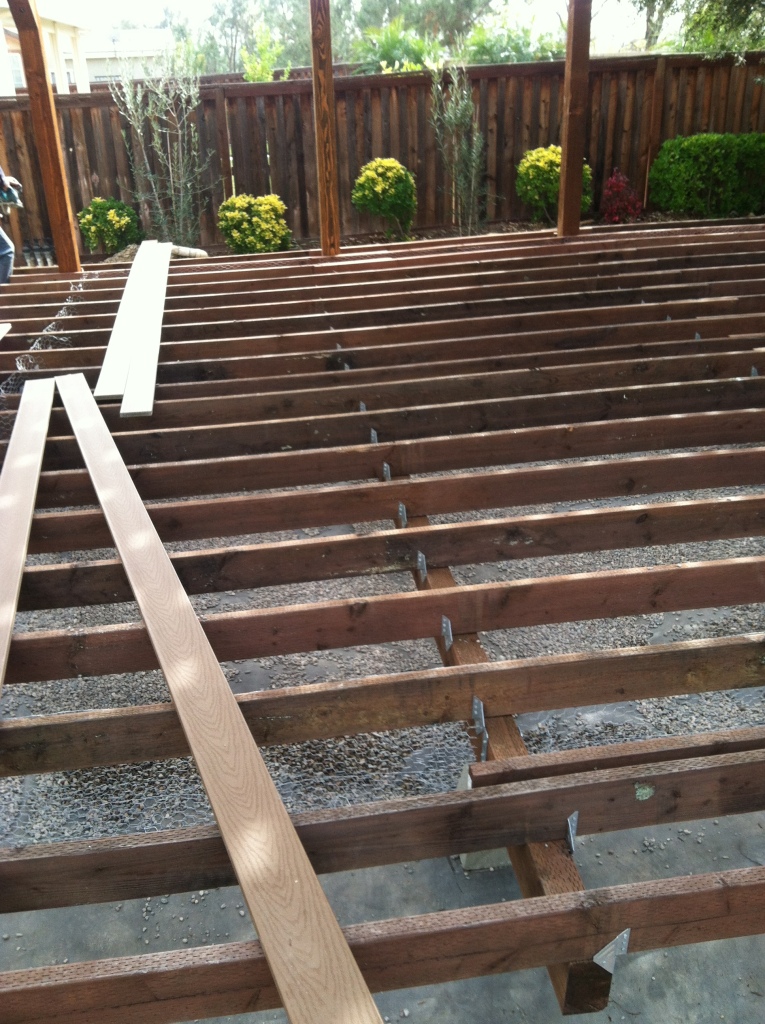 Backyard before November 2013
Backyard before November 2013 Grass and concrete removed
Grass and concrete removed Mapping out
Mapping out Lumber staining
Lumber staining Heavy lifting done by Philip, Tony and Brandon
Heavy lifting done by Philip, Tony and Brandon The work has just begun!
The work has just begun! Getting ready to lay the decking
Getting ready to lay the decking Decking installed
Decking installed Decking done!
Decking done! Lattice work
Lattice work Landscaping begins
Landscaping begins Nearly there!
Nearly there! The mound
The mound Ready!
Ready!Last summer, my husband and I were debating what to do with our backyard. When we moved in nearly three years ago we knew we didn’t want to tackle the backyard right away. I spent many nights, up late at night, scouring Pinterest (addicting I tell you!) for fresh ideas for our future space.
We decided that we would take out all the grass (big water save) and remove a lot of the existing concrete-it was just a giant sea of concrete that really had no purpose. We wanted to create a back yard that reflected the simple character that our Craftsman style home has. Having a love for the simple, Japanese aesthetic, we followed our hearts and decided on a traditional Japanese garden.Truthfully, we modified our plans over and over again. Do you know how many different kinds of gravel there are? Researching which bamboo is not going to be invasive…and so on and so on. After 6 looooooong months of working on our project (literally every weekend) it’s completed! We are so pleased with how it has turned out. We just hosted a baby shower with 40 people over and it is a wonderful place to have a party! Now that it’s finally Summer, were hosting a movie night with friends!
























